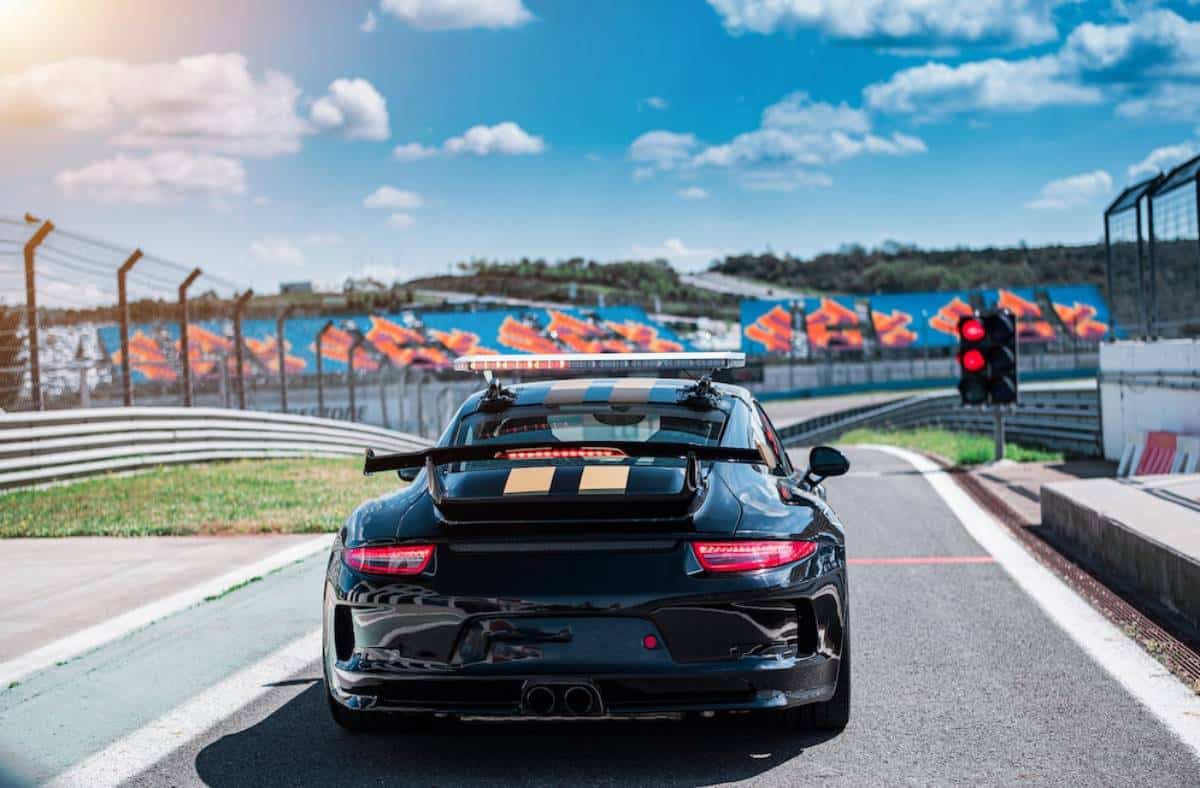
How to Improve Aerodynamics for Better Performance in Track & Motorsport Mods
In the exciting world of track and motorsport, reaching peak performance is a key goal for fans and pros alike. Aerodynamics is a crucial part of this journey. Understanding and using aerodynamic principles can boost your vehicle’s speed, handling, and efficiency. How can you harness these changes effectively? This guide covers aerodynamic car modifications. You’ll find expert tips and steps to boost your track performance.
Aerodynamics isn’t merely about sleek silhouettes; it’s the science of airflow, and it dances around your vehicle. Many car fans harbour misconceptions about effective aerodynamic upgrades. It’s not just about dolling up your ride with flashy parts; it’s about strategic enhancements that boost performance. We’ll explore the best in aerodynamic modifications, unravel the secrets of downforce, and compare the roles of splitters, diffusers, and wings in your vehicle’s aerodynamics optimisation.
Key Benefits of Aerodynamic Modifications
Why Aerodynamics Matter
Before we accelerate into modifications, let’s examine the essence of aerodynamics. In motorsport, they are the driving force behind speed, fuel efficiency, and handling. You enhance stability and control by slicing through drag and boosting downforce, particularly at breakneck speeds. This elevates performance and wraps you in a cocoon of safety on the track.
Real-Life Applications and Insights
Picture the Formula 1 cars, the zenith of aerodynamic engineering. Each curve and part is carefully crafted to improve airflow, reduce drag, and boost downforce. This painstaking attention to aerodynamics allows these beasts to reach staggering speeds and corner with surgical precision. While your track car might not boast F1-grade engineering, applying aerodynamic principles can still improve performance.
Step-by-Step Guide to Aerodynamic Modifications

Understanding the Basics
Before making changes, check your vehicle’s aerodynamic profile. Knowing how air moves over your car helps find areas for improvement. Tools like wind tunnel testing or CFD simulations provide helpful insights. Even simple observations can lead to meaningful changes.
Step 1: Reducing Drag
Streamlining the Body
To improve aerodynamics, streamline your vehicle’s body. Smooth surfaces and fewer protrusions cut down drag. You can remove roof racks when not in use, install flush-mounted windows, or choose low-profile mirrors. Lowering the Vehicle
Lowering your car minimises airflow beneath it, cutting drag. This can be achieved through suspension adjustments or installing lowering springs. However, finding the sweet spot is crucial; an excessively low ride can unwittingly increase drag due to ground effects.
Step 2: Increasing Downforce
Splitter vs. Diffuser vs. Wing
Knowing the distinct roles of splitters, diffusers, and wings is vital for ramping up downforce. Each component plays a unique role in elevating aerodynamics.
- Splitter: This flat extension from the front bumper carves out a high-pressure area above and a low-pressure one beneath, effectively pushing down the front end for enhanced grip.
- Diffuser: Nestled at the rear of your car, a diffuser manages airflow as it exits. Accelerating air underneath reduces pressure and creates a vacuum effect that boosts downforce.
- Wing: Typically mounted at the rear, a wing redirects airflow upwards to press the car downwards. The angle and size of the wing can be fine-tuned to harmonise downforce and drag.
Choosing the right component depends on your track conditions and specific needs. A perfectly balanced mix of splitters, diffusers, and wings can significantly enhance your car’s performance.
Step 3: Fine-Tuning Aerodynamic Components
Adjusting Angles and Positions
After fitting aerodynamic components, fine-tuning their angles and positions maximises effectiveness. For instance, tweaking a wing’s angle of attack could shift the balance between downforce and drag. Similarly, the position and angle of a splitter or diffuser can be adjusted for varying track conditions.
Testing and Iteration
Aerodynamic upgrades require ongoing testing and iteration. Monitor your car’s performance on the track, making adjustments as needed. Track your lap times, cornering speeds, and overall handling to gauge your upgrades’ effectiveness.
Additional Expert Tips & Common Mistakes to Avoid
Best Practices for Aerodynamic Modifications
Prioritise quality over quantity. Invest in high-calibre components crafted specifically for your vehicle model to make a remarkable impact. Remember to consider your car’s overall balance; too much downforce at either end can lead to handling woes.
Common Mistakes and Misconceptions
One prevalent blunder is over-modifying without grasping the effects on performance. Excessive components can add weight and drag, negating potential gains. Avoid changes based solely on appearance; while a component may look stunning, it must serve a functional purpose in enhancing aerodynamics.
Advanced Insights & Expert Recommendations

Lesser-Known Aerodynamic Enhancements
Beyond the basics, advanced enhancements await to turbocharge your performance. Vortex generators dance with the airflow; slicing drags like a hot knife. They cradle your car’s body, ensuring unrivalled stability. Meanwhile, canards—those nimble wing-like wonders—perch on the front bumper, cranking up downforce. With their help, cornering becomes a precise art, transforming every turn into a triumph.
Industry Perspectives
Talk to aerodynamic experts or motorsport engineers for better car performance. They can give you tailored advice based on your vehicle and track conditions. This helps you achieve the best results.
Maximising Performance: The Power of Aerodynamic Upgrades
Improving aerodynamics is key to boosting your vehicle’s performance on the track. By understanding airflow and making innovative changes, you can see significant speed, handling, and efficiency gains. Always focus on quality, test your changes regularly, and get expert advice when needed.
As you bolster your car’s aerodynamics, balance drag reduction with downforce, selecting components that suit your unique needs and track conditions. With the right strategy, unlock your vehicle’s true potential and relish a thrilling, competitive experience on the track.
What are your thoughts on aerodynamic modifications? Have you embraced any of these enhancements in your vehicle? Share your insights and experiences in the comments below!